Disclosure: This article contains affiliate links. We may earn a commission from purchases at no extra cost to you, which helps our travel content.
When I traded the sleek skyscrapers of Seoul for the saguaro-studded skyline of Phoenix last autumn, I wasn't expecting to find such profound parallels between Korean artistic traditions and the indigenous heritage of the American Southwest. As someone who has spent the last five years immersed in Asian calligraphy and traditional crafts, Phoenix revealed itself as a masterclass in cultural preservation amid modernization—something I've been documenting across Asia since reducing my legal caseload. This desert metropolis offers a remarkable juxtaposition: ancient petroglyphs etched into sun-baked rocks alongside cutting-edge contemporary galleries; traditional basket weaving demonstrations happening just miles from international art installations. For couples seeking a culturally immersive escape that balances indigenous wisdom with contemporary creativity, Phoenix in fall delivers an experience that resonates long after the desert sunset fades.
Heard Museum: Where Indigenous Stories Come Alive
The Heard Museum stands as Phoenix's crown jewel for understanding the rich tapestry of Native American cultures. Unlike many institutions that present indigenous art through a colonial lens, the Heard offers something profoundly different—Native voices telling Native stories. As someone who has spent countless hours studying traditional Korean craftsmanship, I was immediately struck by the parallels in how artisans across continents communicate cultural values through handwork.
The museum's signature exhibition, HOME: Native People in the Southwest, provides an essential foundation for understanding the region's indigenous heritage. I spent nearly three hours absorbing the intricate basketry, pottery, and textiles—each piece telling stories of adaptation and resilience in the harsh desert environment. What particularly moved me was the acclaimed Remembering Our Indian School Days exhibition documenting the boarding school era—a powerful reminder of cultural preservation against systematic erasure.
During my visit, I was fortunate to witness a live pottery demonstration by a Hopi artist whose hands seemed to possess ancestral memory as they transformed clay into vessels. The museum's gift shop offers ethically sourced indigenous art, where I purchased a small Zuni fetish carving that now sits beside my Korean celadon collection in Seoul—a tangible connection between my adopted home and ancestral American landscapes.
I highly recommend investing in the audio guide to fully appreciate the contextual significance of the collections. The guided tour provides cultural insights that written placards simply cannot convey.
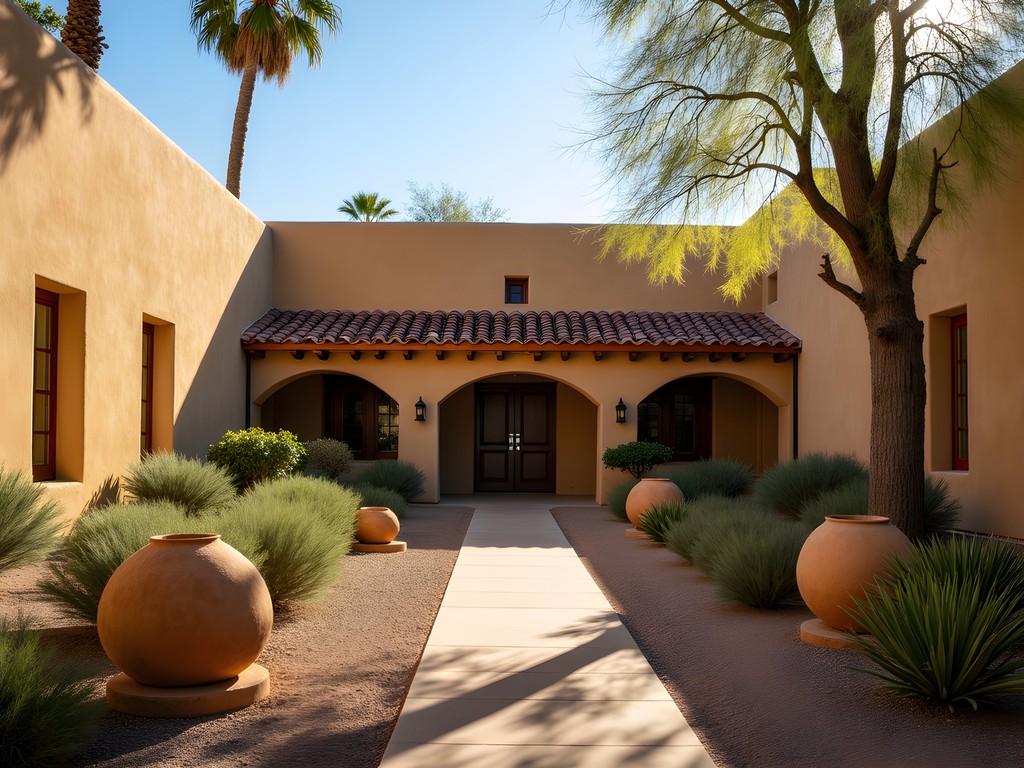
💡 Pro Tips
- Visit on a weekday morning for the most contemplative experience with fewer crowds
- Check the museum calendar for artist demonstrations scheduled during your visit
- Allow at least 3 hours to properly experience the collections and exhibitions
Immersive Learning at the Pueblo Grande Museum
While the Heard Museum provides a broad overview of indigenous cultures, the Pueblo Grande Museum Archaeological Park offers something equally valuable—a direct connection to the Hohokam people who engineered sophisticated canal systems in the Phoenix basin nearly 2,000 years ago. As someone who has documented traditional farming practices across Asia, I found the parallels between ancient Korean irrigation systems and Hohokam water management techniques absolutely fascinating.
The museum is built around an actual archaeological site featuring a partially excavated ball court and platform mound. The 2/3-mile trail winds through preserved ruins and reconstructions that vividly illustrate how the Hohokam not merely survived but thrived in this demanding desert environment. What makes this experience particularly special is the juxtaposition of ancient engineering against the backdrop of modern Phoenix—a powerful reminder of the city's deep cultural roots.
I visited during one of their monthly Traditional Games days, where I attempted (rather unsuccessfully, I must admit) to master the ancient game of toka alongside local families. My legal training may have prepared me for precision, but these traditional games require a different kind of embodied knowledge entirely!
The museum's small but excellent gift shop offers locally made crafts, where I found a beautiful field guide that helped me identify native plants throughout the remainder of my Phoenix explorations. This compact guide proved invaluable during hikes at nearby South Mountain Park, where I later discovered petroglyphs etched into the desert varnish.
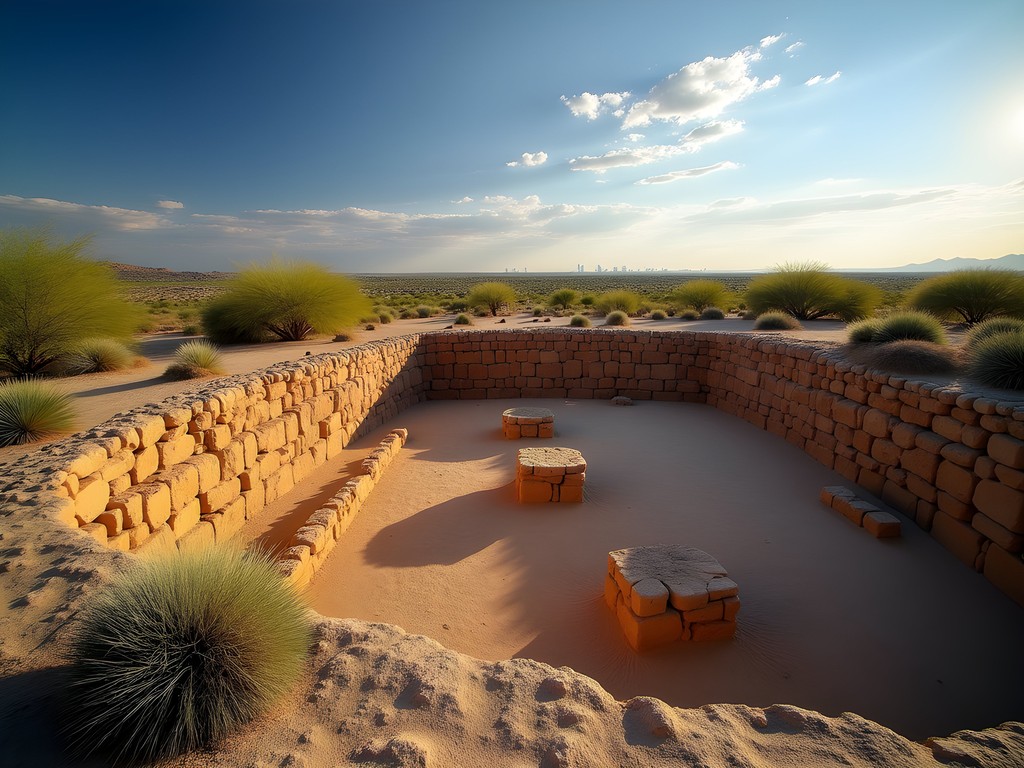
💡 Pro Tips
- Visit early morning or late afternoon to avoid the midday heat on the outdoor trail
- Wear closed-toe walking shoes and bring water for the archaeological trail
- Check their calendar for special events like Traditional Games days or Native artisan demonstrations
Phoenix Art Museum: Where Desert Modernism Shines
After immersing myself in indigenous heritage, I sought balance by exploring Phoenix's contemporary art scene. The Phoenix Art Museum offers an impressive collection spanning global art movements while maintaining a strong focus on Western American and Latin American perspectives. Having visited countless museums across Asia, I was pleasantly surprised by both the breadth of the collection and the thoughtfully designed exhibition spaces.
The museum's contemporary art wing particularly resonated with me, especially works exploring cultural identity and displacement—themes that speak directly to my experience as an American expatriate in Korea. I was especially moved by the museum's collection of modern Native American artists who blend traditional techniques with contemporary expression, creating powerful dialogues between past and present.
The Fashion Design Gallery was an unexpected highlight, featuring rotating exhibitions that examine cultural identity through textile arts—something that immediately connected to my passion for Korean textile traditions. During my visit, an exhibition on adaptive clothing design demonstrated how contemporary creators are addressing accessibility while honoring traditional craftsmanship.
I recommend timing your visit to coincide with one of their First Friday events, when the museum stays open late with special programming and local artists. I attended a fascinating panel discussion featuring indigenous artists working in digital media that completely transformed my understanding of how traditional knowledge systems can inform cutting-edge creative practices.
The museum café offers a perfect respite after hours of art appreciation. I enjoyed a refreshing prickly pear lemonade while reviewing the exhibition catalog I purchased—now a treasured addition to my growing collection of art books from around the world.
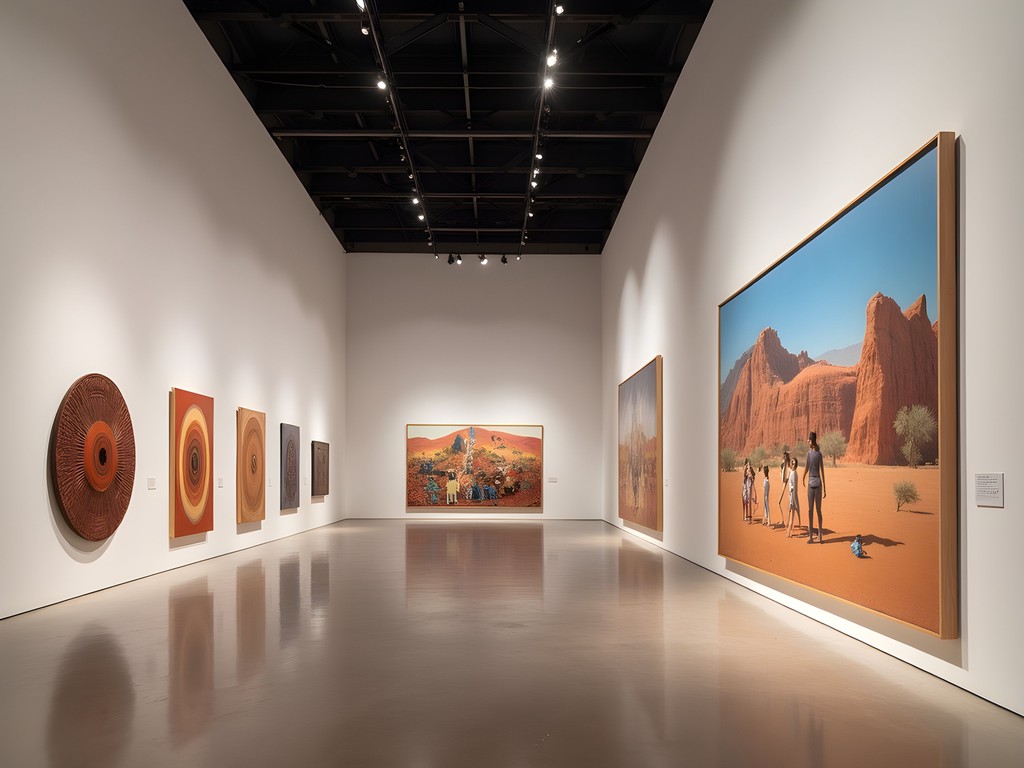
💡 Pro Tips
- Take advantage of the free docent-led tours offered several times daily
- Visit on Wednesday evenings for reduced admission prices
- Check their calendar for special exhibitions that might align with your visit
Roosevelt Row Arts District: Phoenix's Creative Pulse
No cultural exploration of Phoenix would be complete without experiencing Roosevelt Row, the vibrant arts district that has transformed downtown Phoenix into a canvas for creative expression. As someone who has documented urban renewal through arts initiatives across Asian cities, I was immediately drawn to this neighborhood's energy and authentic community spirit.
First Friday Art Walks are the district's signature experience, when galleries open their doors late into the evening and streets fill with pop-up exhibitions, performance art, and food vendors. The atmosphere reminds me of Seoul's Hongdae district—creative, slightly chaotic, and utterly authentic. I spent hours wandering between galleries, chatting with local artists about their processes and inspirations.
What particularly impressed me were the massive murals adorning buildings throughout the district—many depicting themes of indigenous heritage, environmental consciousness, and cultural identity. Having studied traditional Korean calligraphy for years, I found myself drawn to works incorporating text and symbolic imagery that bridge ancient communication systems with contemporary visual language.
MonOrchid gallery stands as an anchor in the district, housed in a repurposed warehouse with soaring ceilings and industrial character. During my visit, they featured an exhibition of contemporary indigenous photographers documenting environmental challenges facing tribal lands—powerful storytelling that connects traditional knowledge with urgent contemporary issues.
For the full Roosevelt Row experience, I recommend bringing a portable water bottle to stay hydrated while exploring the district on foot. Phoenix's dry climate demands constant hydration, especially when you're spending hours walking between galleries and outdoor installations. This insulated bottle kept my water cold throughout the afternoon heat and into the evening gallery crawl.

💡 Pro Tips
- Visit during First Friday Art Walk (monthly) for the most vibrant experience
- Look beyond the main street—many excellent galleries are tucked away on side streets
- Support local artists by purchasing small works or prints as meaningful souvenirs
Artisan Workshops: Hands-On Cultural Immersion
After years documenting traditional crafts across Asia, I've learned that true cultural understanding comes through participation, not just observation. Phoenix offers numerous opportunities for hands-on learning with indigenous artisans and contemporary creators who bridge traditional techniques with modern applications.
At the Heard Museum, I attended a silversmithing workshop led by a Navajo artist who patiently guided participants through creating simple stamped designs. The meditative quality of metalwork reminded me of the Korean traditional craft of bangjja, or bronze hammering, that I've studied in Seoul. Both traditions require presence, patience, and respect for materials—values that transcend cultural boundaries.
The Phoenix Center for the Arts offers an impressive range of classes connecting traditional and contemporary techniques. I participated in a weekend workshop on gourd art, learning how indigenous artists transform these humble natural vessels into objects of profound beauty through carving, painting, and inlay techniques. My modest creation now sits proudly beside Korean celadon pieces in my Seoul apartment—a tangible reminder of creative connections across continents.
For couples seeking a meaningful shared experience, I highly recommend booking a private workshop at the Cattle Track Arts Compound in nearby Scottsdale. This historic artists' community has preserved traditional crafts alongside contemporary practice since the 1930s. I spent a memorable afternoon learning traditional basketry techniques using native desert plants, gaining new appreciation for how indigenous knowledge systems encode sustainable relationships with local environments.
Before attempting any fiber arts workshops, I recommend investing in a quality hand cream to protect your hands from the extremely dry desert climate. Working with natural fibers and clay can be particularly drying, and this rich cream kept my hands comfortable throughout multiple workshop sessions.

💡 Pro Tips
- Book workshops well in advance as many fill quickly, especially during peak season
- Consider your skill level—many venues offer both beginner and advanced options
- Look for workshops led by indigenous artisans for the most authentic cultural context
Final Thoughts
Phoenix offers a remarkable cultural journey that balances reverence for indigenous heritage with celebration of contemporary creative expression. As I returned to Seoul, my suitcase heavier with art books and handcrafted treasures, I found myself reflecting on how desert peoples—like traditional Korean artisans—have transformed environmental constraints into catalysts for profound artistic innovation. For couples seeking connection through cultural immersion, Phoenix provides fertile ground for shared discovery and meaningful dialogue about preservation, adaptation, and creative resilience. Whether you're studying ancient pottery techniques at the Heard Museum or discussing environmental art at Roosevelt Row galleries, Phoenix invites you to engage with culture as active participants rather than passive observers. I encourage you to approach this desert city with open hands and curious hearts—you'll leave with not just souvenirs, but a deeper understanding of how art and heritage shape our collective human story.
✨ Key Takeaways
- Phoenix's cultural scene balances indigenous heritage with contemporary expression
- Hands-on workshops provide deeper cultural understanding than observation alone
- Fall offers ideal weather for exploring both indoor museums and outdoor installations
- The juxtaposition of ancient and modern creates unique perspective on cultural preservation
📋 Practical Information
Best Time to Visit
October through November
Budget Estimate
$150-250 per day for accommodations, meals, and activities
Recommended Duration
5-7 days
Difficulty Level
Moderate



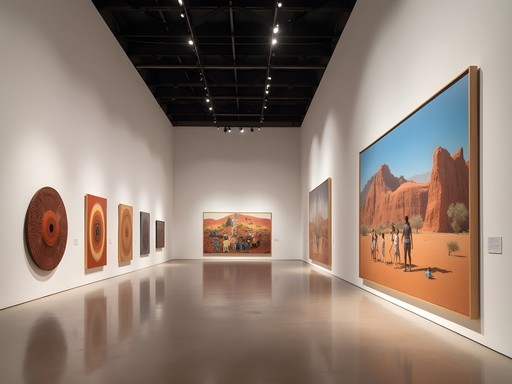






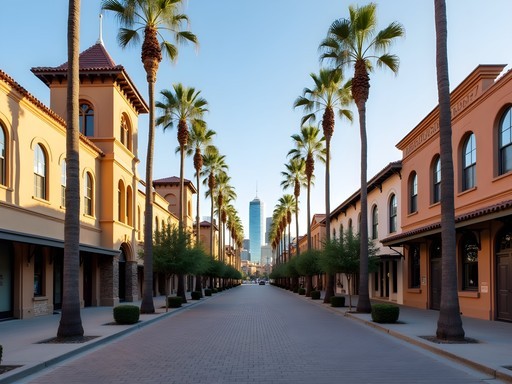





Comments
globenomad
First time heading to Phoenix next month! Is it easy to get between these cultural spots without a car? Or should I rent one?
AZlocal85
As a Phoenix local, I love seeing our indigenous art scene getting the recognition it deserves! Great post.
sunnymood
Love how you connected different cultural art forms! Did you find the public transportation good for getting between these museums or would you recommend renting a car?
Amy Ward
Thanks for asking! I actually used a mix of both. The light rail is great for getting to the Phoenix Art Museum and Roosevelt Row, but I found having a car helpful for reaching the Heard Museum and Pueblo Grande. If you're staying downtown, you could definitely use rideshare for those spots too. I used my city guide to plan my public transit routes which worked out well!
sunnymood
That's super helpful, thanks! Will probably do a mix then since we're staying near downtown.
Frank Garcia
Amy, your comparison between Korean artistic traditions and indigenous American art forms is fascinating! I spent three days at the Heard Museum last spring and was completely mesmerized by the katsina doll collection. The way you've captured the intersection of traditional and contemporary art scenes in Phoenix is spot on. Did you get a chance to visit the Scottsdale Museum of Contemporary Art as well? Their desert-inspired installations provide another interesting perspective on how the landscape shapes artistic expression. The Roosevelt Row Arts District is definitely the beating heart of Phoenix's art scene - I'd recommend visiting during First Friday if possible for the full experience!
sunnymood
Is Roosevelt Row walkable or did you need to drive between galleries? Heading to Phoenix next month!
Frank Garcia
It's definitely walkable! The core area is compact with lots of murals, galleries and cafes all within a few blocks. If you're there during the day, just bring water and a hat - that desert sun is no joke. The light rail also runs nearby if you get tired.
sunnymood
Perfect! Thanks for the tips! ☀️
globebuddy
That shot of the light installation at Phoenix Art Museum is STUNNING! Did you use night mode? I'm heading there in November and definitely adding this to my list!
tripking
Not OP but that installation (James Turrell's work) is even better in person. Set aside at least 15 minutes just to sit in that space and let your eyes adjust. Pure magic.
Marco Flores
Amy, your post captures exactly what surprised me about Phoenix when I visited from France! I expected just desert and resorts but found this incredible cultural depth. The Pueblo Grande Museum blew me away - walking those ancient ruins while using their audio guide really transported me back in time. I'd add that the Desert Botanical Garden is worth visiting too - the way they showcase native plants alongside indigenous art installations creates this beautiful dialogue between nature and culture. Your observation about the parallels between Korean and indigenous art perspectives is something I'll be thinking about for a long time.
tripking
Just got back from Phoenix last week and can confirm Roosevelt Row has evolved even more since this post! Caught a fantastic First Friday art walk - they close several streets and it becomes this massive cultural festival. Definitely plan your visit around one if you can. The murals Amy mentioned are even more impressive in person!
beachrider
First Friday sounds amazing! Adding that to my list!
Amit Sullivan
Amy, your piece took me back to my visit to Phoenix last year. The Heard Museum was truly transformative - I spent hours absorbing the katsina doll collection and the boarding school exhibition. As someone who's studied indigenous cultures across continents, I found the parallels you drew between Korean artistic traditions and indigenous American art particularly insightful. The desert light creates a canvas unlike anywhere else, doesn't it? If you get a chance on your next visit, try to catch one of the artist demonstrations they sometimes host on weekends - adds another dimension entirely.
globenomad
Amit - is October a good time to visit Phoenix? Worried about the heat but want to see these museums!
Amit Sullivan
October is perfect! The summer inferno has passed but it's still warm enough to enjoy outdoor spaces like Roosevelt Row. Most days are gloriously sunny with temperatures in the mid-20s°C.
beachrider
Love how you connected Korean art traditions with indigenous ones! Never would have thought of that parallel. The photos from Roosevelt Row are amazing!
starninja
Just got back from Phoenix and can confirm everything in this post! The Heard Museum was incredible - don't miss the boarding school exhibit, absolutely heartbreaking but so important. And if you're into street art, Roosevelt Row has some of the best murals I've seen anywhere in the US. We stayed at an Airbnb in that area and loved being able to walk to so many great restaurants and galleries. Pro tip: early mornings are best for outdoor activities, especially if you're visiting Pueblo Grande's outdoor trails. The heat gets intense by 10am even in fall!
Venture X
Premium card with 2X miles, $300 travel credit, Priority Pass